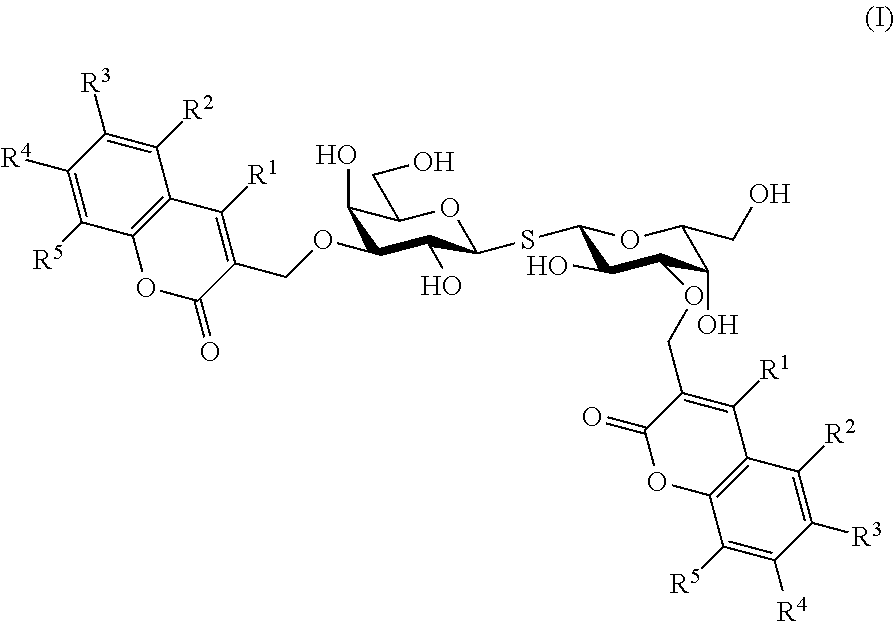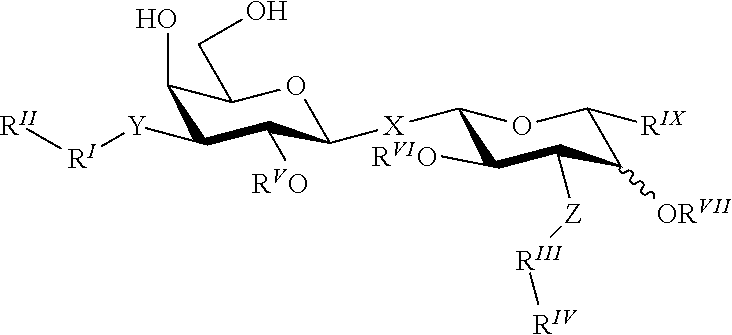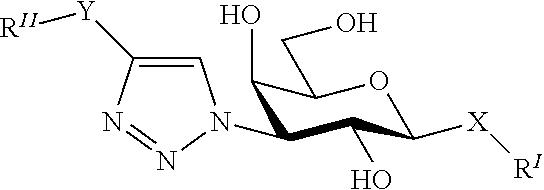Galectoside inhibitors of galectins
a technology of galectin and inhibitors, which is applied in the field of new compounds, can solve the problems of lack of specificity or lack of scientific focus, saccharides identified as galectin-3 ligands are not suitable for use as active components, and are not readily absorbed
- Summary
- Abstract
- Description
- Claims
- Application Information
AI Technical Summary
Benefits of technology
Problems solved by technology
Method used
Image
Examples
examples
Synthesis of Coumaryl-Substituted Thiodigalactosides
[0109]The coumaryl-substituted thiodigalactosides were synthesized from known phenyl 3-O-propargyl-1-thio-β-D-galactopyranoside 1 (Giguere et al., 2006) as shown in scheme 1.
[0110]
Evaluation of Kd Values Against Galectin-3
[0111]Compounds 20-34 were evaluated for their efficiency in inhibiting galectin-1 and galectin-3 in a known fluorescence polarization-based assay (Sorme et al., 2003a, 2004) (see also Table 1 below). The known galectin inhibitors methyl β-D-galactoside and thiodigalactoside were included as reference compounds. Indeed, all compounds were potent inhibitors of galectin-1 and galectin-3 with dissociation constant in the low μM or nM range. This evidences that a synthetically simple and properly structured coumaryl substituents on O3 and O3′ of thiodigalactoside show inhibitory efficiencies in the range of comparable 3-N-substituted and synthetically earlier known compounds (3,3′-amido-thiodigalctosides; such as the ...
PUM
| Property | Measurement | Unit |
|---|---|---|
| weight % | aaaaa | aaaaa |
| pH | aaaaa | aaaaa |
| pH | aaaaa | aaaaa |
Abstract
Description
Claims
Application Information
 Login to View More
Login to View More - R&D
- Intellectual Property
- Life Sciences
- Materials
- Tech Scout
- Unparalleled Data Quality
- Higher Quality Content
- 60% Fewer Hallucinations
Browse by: Latest US Patents, China's latest patents, Technical Efficacy Thesaurus, Application Domain, Technology Topic, Popular Technical Reports.
© 2025 PatSnap. All rights reserved.Legal|Privacy policy|Modern Slavery Act Transparency Statement|Sitemap|About US| Contact US: help@patsnap.com



